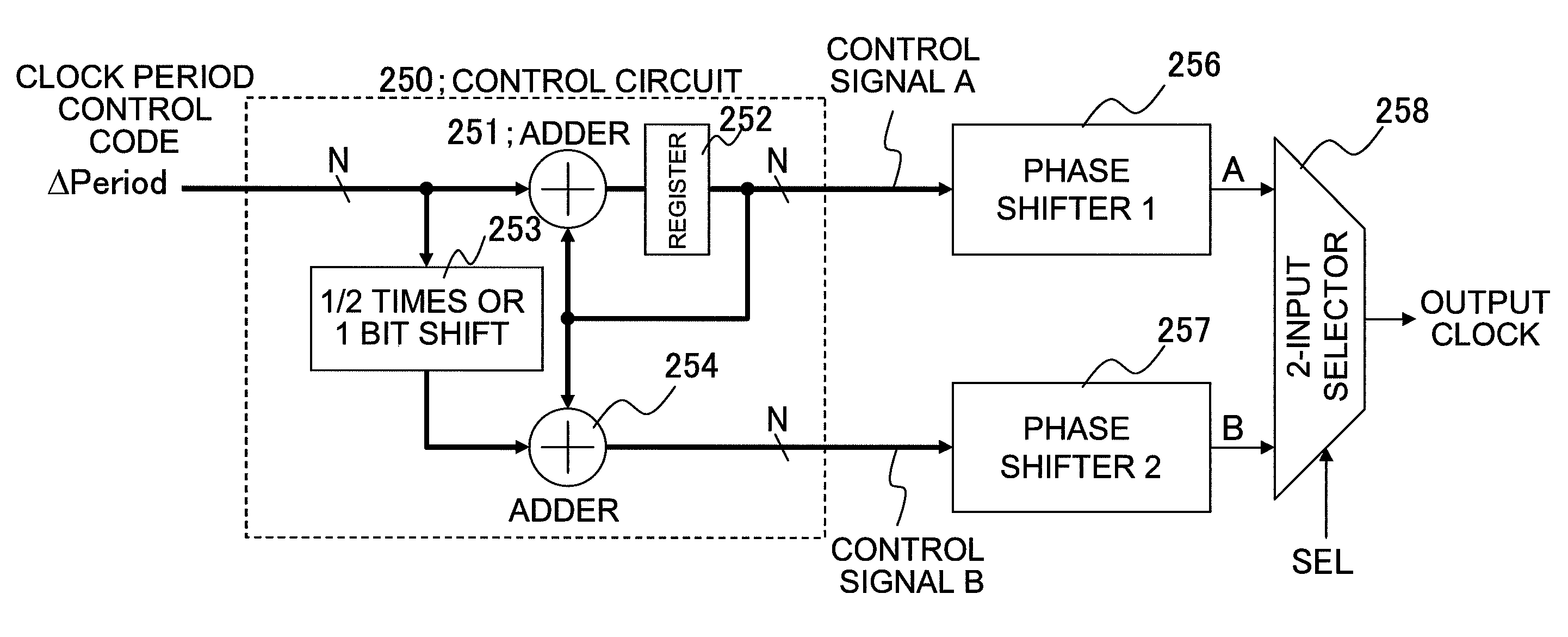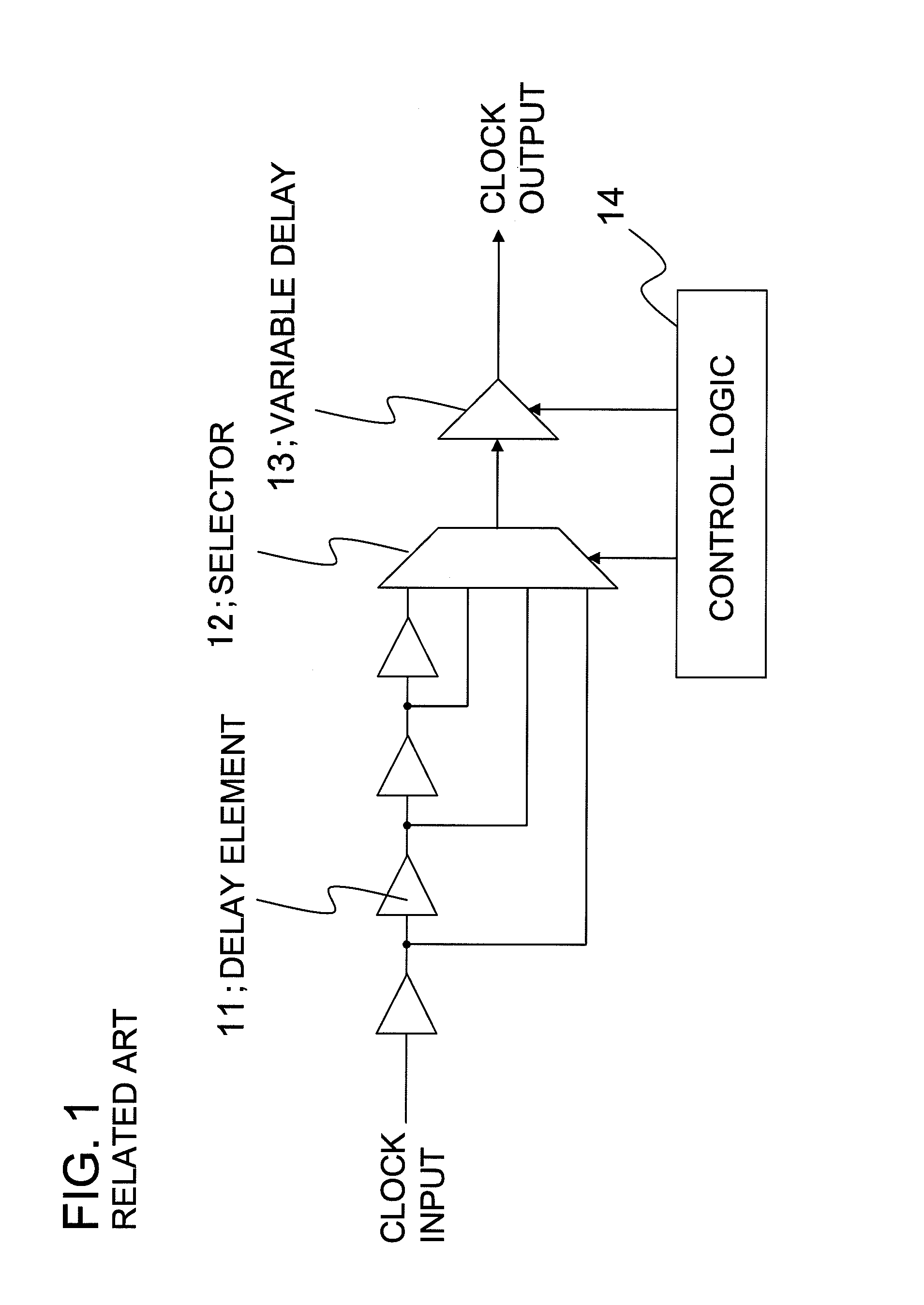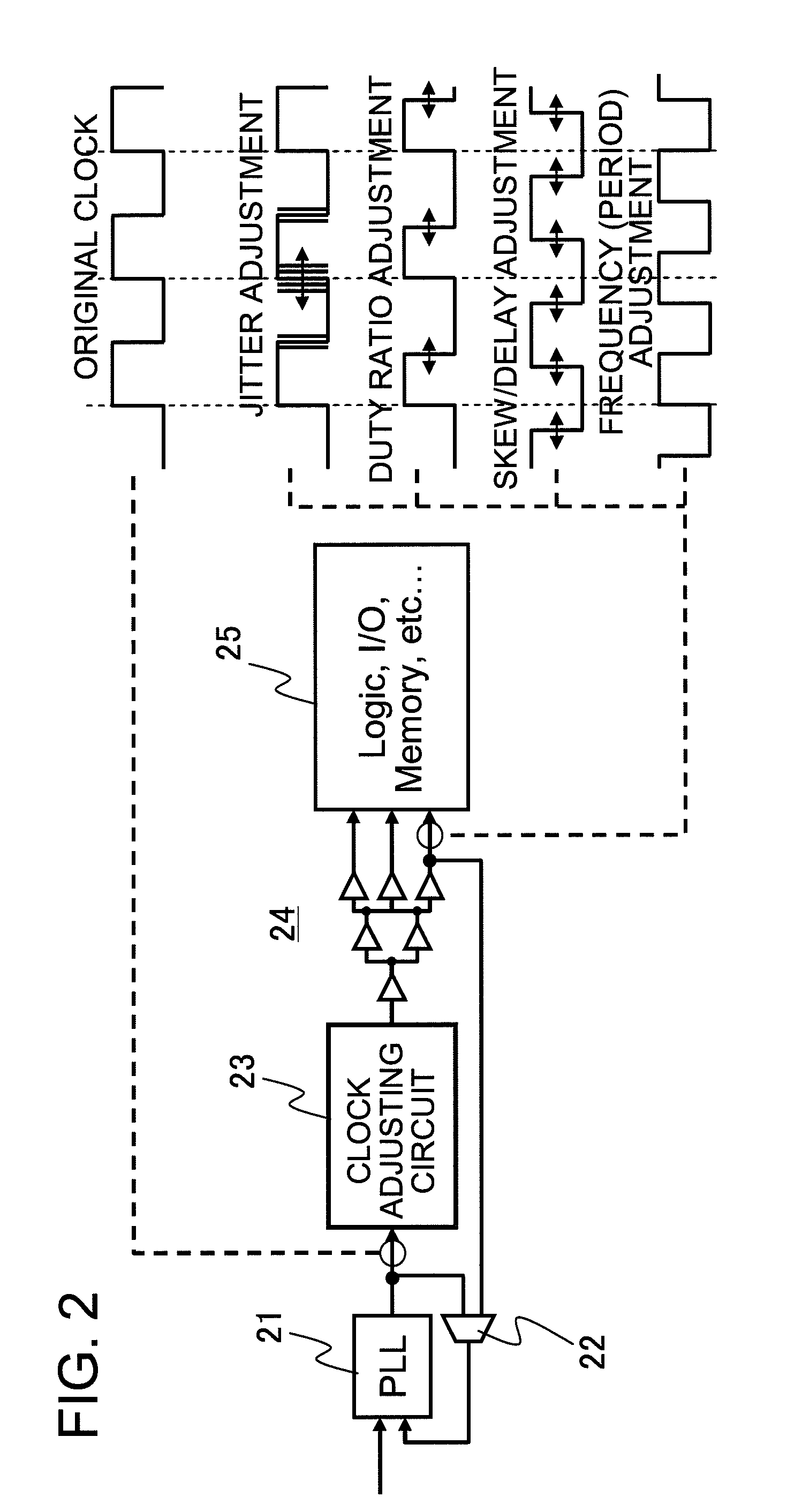Clock adjusting circuit and semiconductor integrated circuit device
a clock-adjusting circuit and integrated circuit technology, applied in the direction of generating/distributing signals, pulse techniques, instruments, etc., can solve the problems of not being able to detect faults or failures, operational faults on actual products, and not being able to test the margin while adjusting the operation frequency of lsi, so as to reduce false negatives of faults, high reliability, and large margin
- Summary
- Abstract
- Description
- Claims
- Application Information
AI Technical Summary
Benefits of technology
Problems solved by technology
Method used
Image
Examples
Embodiment Construction
[0201]In the present invention, a semiconductor integrated circuit includes a circuit that can adjust a clock period, duty ratio, skew between clock domains, and the like, is built in a semiconductor integrated circuit. When the semiconductor integrated circuit is being tested, this circuit is used to perform an operation test while adjusting the clock period of a clock signal, duty, skew between the clock domains, and the like, inside a semiconductor integrated circuit, and to detect operation margin of each thereof. An LSI (Device Under Test) with little operation margin does not pass a selection test, and only semiconductor integrated circuits with a large margin are shipped.
[0202]Furthermore, using this adjustment circuit also after shipping of the semiconductor integrated circuit, a self test of the margin is performed with respect to the clock period, the duty, the skew, and the like, and in case the margin is less than a specified value, an operation of emitting a warning, or...
PUM
 Login to View More
Login to View More Abstract
Description
Claims
Application Information
 Login to View More
Login to View More - R&D
- Intellectual Property
- Life Sciences
- Materials
- Tech Scout
- Unparalleled Data Quality
- Higher Quality Content
- 60% Fewer Hallucinations
Browse by: Latest US Patents, China's latest patents, Technical Efficacy Thesaurus, Application Domain, Technology Topic, Popular Technical Reports.
© 2025 PatSnap. All rights reserved.Legal|Privacy policy|Modern Slavery Act Transparency Statement|Sitemap|About US| Contact US: help@patsnap.com



